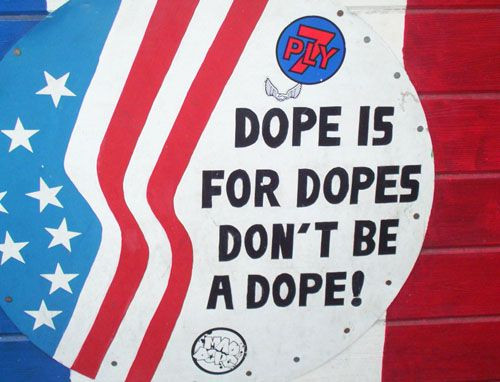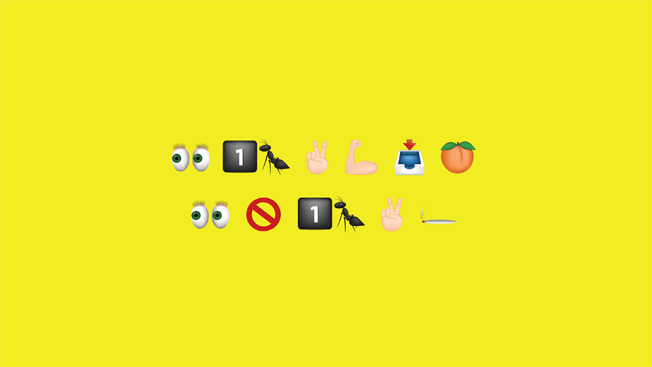This Is Your Brain On Drugs: How Drug Public Service Announcements Have Changed Over The Years

Public service announcements (PSAs) have been around since World War II, when the Ad Council began creating PSAs to inspire the general public into helping the war effort. Over time, however, PSAs changed by branching out into a myriad of subjects from global awareness and preventing forest fires to drunk driving. Many antidrug PSA’s have also come out over the years, dating back to the late 1930s with the release of the film Reefer Madness, which decried the use of marijuana. Antidrug PSAs have evolved over the years, however, so let’s take a look at what PSAs of the last 80 years have looked like and how effective they’ve been.
A History of Drug PSAs
The 1950s
Aside from the aforementioned Reefer Madness, it wasn’t until 1951 that what is widely recognized as the first antidrug PSA was released. It has the same basic plot as Reefer Madness, telling the story of a good boy named Marty who experiments with marijuana. But then he goes on to use heroin. Eventually he goes to jail. While it may be considered tame by today’s standards, it shows that even back then, people believed marijuana could be a gateway drug.
1960s Propaganda
The 1960s found PSAs in a more propaganda-like place, with overbearing narrators and first-person camera angles showing the perils of drug use, and how doing them can essentially ruin the world. Most of these PSAs only warned of the dangers of smoking marijuana — something people might find amusing today, considering marijuana is legal in some form in 23 states .
“The brain, the body, indeed the freedom to do can be so jeopardized by these drugs, that new politics, more realistic values, and a meaningful, less materialistic society may never have the opportunity of becoming a reality,” one PSA narrator said.
The Beginning Of The War on Drugs
The “War on Drugs” was a term first coined in the early 1970s after President Richard Nixon sent a special message to Congress about drug abuse and prevention. In it, he called drugs “public enemy number one,” and went on to say that he would deal with the rampant drug use by asking Congress to provide an additional $155 million for drug-control measures. “This will provide a total of $371 million for programs to control drug abuse in America,” he said. The PSAs of this decade also expanded their reach, going after amphetamines, barbiturates, and sniffing glue in addition to marijuana.
‘This Is Your Brain On Drugs’
During the 1980s, cartoon characters, like He-Man , Sonic the Hedgehog, and the G.I. Joes, were the ones telling young viewers that drugs can ruin lives. Even Michael Jordan participated in keeping kids aware of the harm drugs could have on their future. Despite such influential figures advocating for kids to be drug-free, most of the PSAs lasted less than a minute and didn’t show exactly how drugs could cause harm.
It wasn’t until the “This is Your Brain on Drugs” campaign aired in 1987 that PSAs turned to more hard-hitting visuals. In it, an egg representing the brain was thrown into a sizzling hot frying pan, which represented drugs. The PSA ended by saying, “This is your brain on drugs. Any questions?”
The 90s: Building on the Past
PSAs in the early 1990s went back to relying on cartoon characters to spread the message. In one, the Teenage Mutant Ninja Turtles helped a kid who was offered marijuana find his way out of the uncomfortable situation.
The "Your Brain on Drugs" PSA also made a reappearance in 1997 by building on the same premise. Instead of cooking an egg in a frying pan, however, the frying pan was used to smash the egg to pieces. Then, the frying pan was used to destroy the kitchen, which represented the destruction of the user’s life.
The 2000s
As the millennium came and went, PSAs began to get a little smarter with their messaging. They asked people to talk to their friends about their drug problems, and showed just how harmful marijuana and meth could be. In one, a person who was high on weed was shown hitting a child with their car. Meanwhile, PSAs for meth portrayed an addict robbing a store for drug money. These ads also started using statistics to hammer their points home, and some even showed family pets disappointed in their owners’ drug use.
The Present Day
With the modern day rise of social media and other Internet websites facilitating global communication, PSAs have begun to take the form of online trends like memes, gifs, and emojis. A new antidrug campaign by the Partnership for Drug-Free Kids, which created the “Your Brain on Drugs” ad, uses emojis to spread the message.
"It's not about saying drugs are bad. It's about saying drugs are not for me," Kristi Rowe, CMO at the Partnership for Drug-Free Kids, told Adweek. The campaign, which involves outdoor, print, cinema, and mobile platforms, uses emojis to to create a string of words.

Are PSAs Effective?
So, after 80 years of anti-drug PSAs, how effective have they been?
A study from 2002 found that the effectiveness of PSAs varied. Researchers asked 3,608 adolescent boys and girls about the effectiveness of 30 antidrug PSAs, and found that 16 of the PSAs were perceived as significantly effective in reducing drug use. Meanwhile, six other PSAs were perceived as less effective at teaching the students how to deal with drug situations, or deterring them from using drugs with their friends. The final eight had a reportedly minimal effect on the students.
Another study, published in The Lancet in 2010, found antidrug PSAs don’t work as well as antismoking PSAs. "A PSA campaign can be very good at making people do stuff that doesn't require that much of a sacrifice, like going and getting a colonoscopy or a mammogram, or waiting to get to your garbage can to throw away your litter," Robert Thompson, professor of popular culture at Syracuse University, told UPI. “It’s much harder to get people to stop eating fatty foods.” And arguably, fatty foods can be just as addictive as drugs.
As popular as the “Your Brain on Drugs” campaign was — TV Guide and Entertainment Weekly both called it one of the best commercials of all time — a case study from 2000 found that between 1987 and 1992, when the ad was heavily circulated, monthly illicit-drug use in kids aged 12 to 17 dropped from 3.2 million children to 1.3 million. However, come 1994, when the ad got less exposure, drug use jumped back up to 2.1 million children.
While antidrug PSAs may not have been as effective as they sought to be, the message behind them — that drug use can have a lot of negative effects on a person’s life — is still important.



























